Wildlife
and Energy
Programme

Africa is on the cusp of an energy revolution with a drive to connect people, services, and resources to a web of energy generation and power line infrastructure. South Africa’s development path over the past 40 years has resulted in numerous challenges and interactions for wildlife on its growing network of electrical infrastructure. In response, the EWT and Eskom established the world’s first partnership to address the risks to wildlife from energy infrastructure.
What is energy infrastructure?
Energy infrastructure refers to the built structures and installations that enable the production and transfer of electricity from its source to the end-user. Examples of energy infrastructure include power lines, power stations, towers, electricity poles, wind turbines, and solar developments.
5
projects
7
countries
8
pack members

The impact of energy infrastructure on wildlife
Energy infrastructure represents an important interface between people and wildlife, particularly in Africa’s growing economies. These structures are often tall (standing out in any landscape) and linear (crossing vast distances), increasing the opportunity for wildlife interactions. African power utilities, typically parastatals, are responsible for providing electricity to meet the increasing demands as the continent’s economies continue to grow. As a result, the environmental footprint of power lines and other accompanying electrical infrastructure continues to expand. This includes renewable energy infrastructure such as wind turbines.
Within this context, the term “wildlife interactions” captures various possible negative and positive impacts involving a range of species. On the positive side, depending on the design, birds can use certain pylons or buildings as alternative nesting sites, perches or roosts. However, many interactions have negative consequences for both energy infrastructure and wildlife. For example, collisions with conductors and shield wires kill flying birds. Large bird species are also at risk of electrocution when coming into contact with two live phases or live and earthed phases on distribution lines and substation components. Although our data show that large bird species such as vultures are most at risk, we have several records of mammals – including Vervet Monkeys, Baboons, Small-spotted Genets, Leopards, and even several snake species – that perish from electrocutions. Aside from climbing species, larger mammals are also at risk. Our research in the Kruger National Park indicates that elephants, rhinos, and buffalos regularly use wooden electric poles to rub against and clean/sharpen their horns or tusks. This behaviour damages the wooden poles and when they break, the conductor is suspended only a few meters from the ground. Giraffes and elephants are the most affected as they easily come into contact with live phases in such cases. Incidents such as these turn into “death traps” as vultures and other scavengers are attracted to the carcasses, and multiple species can be affected at once.
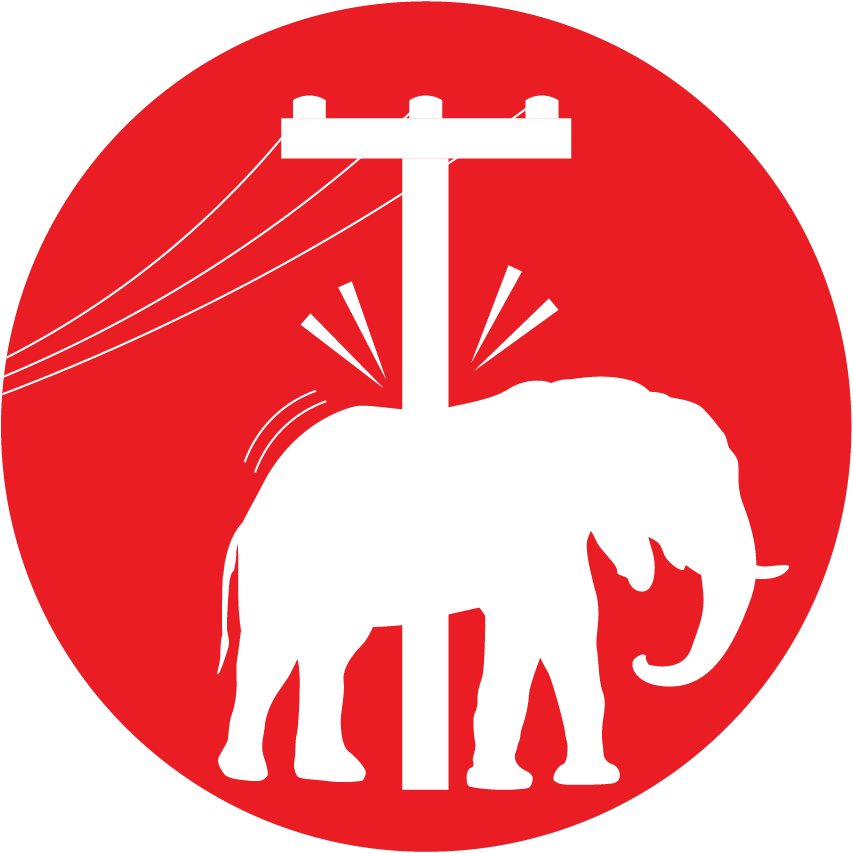

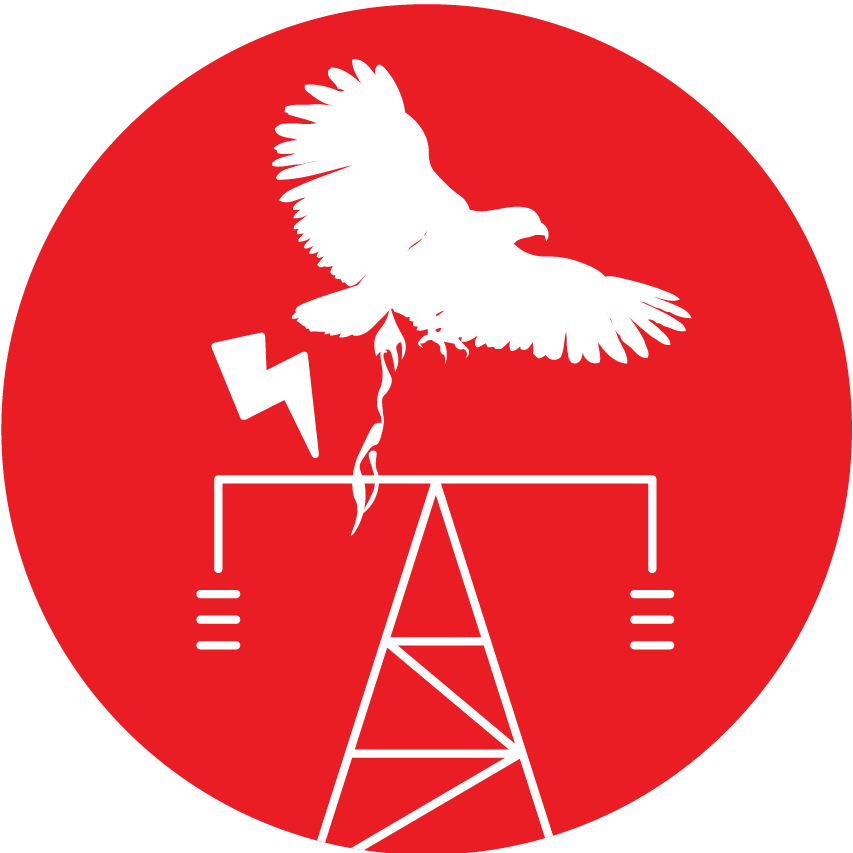
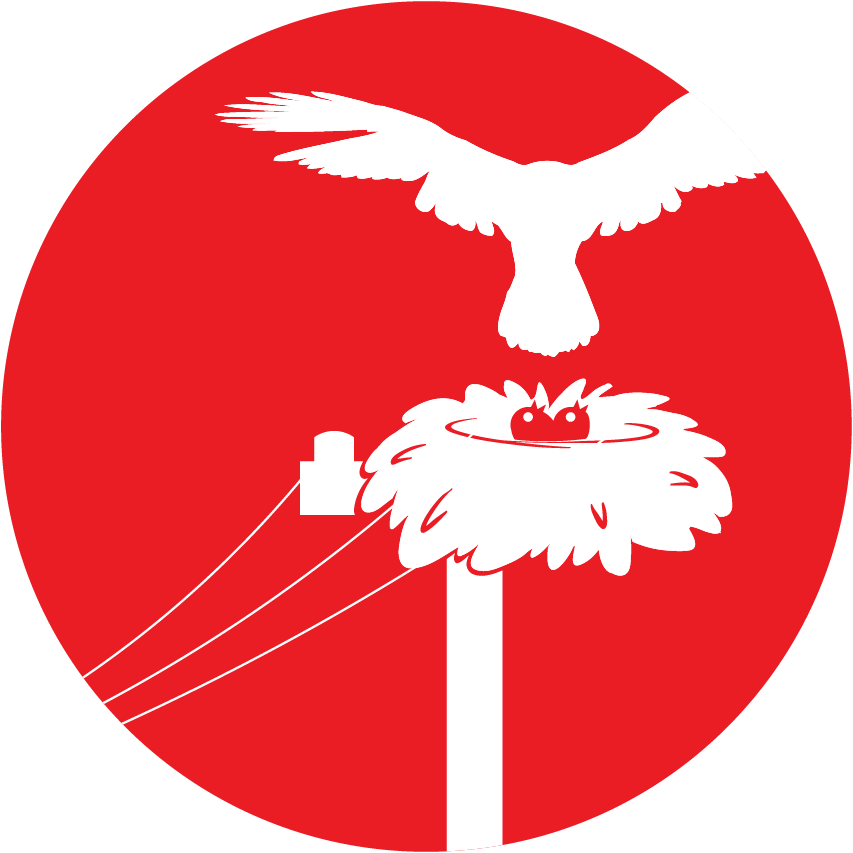
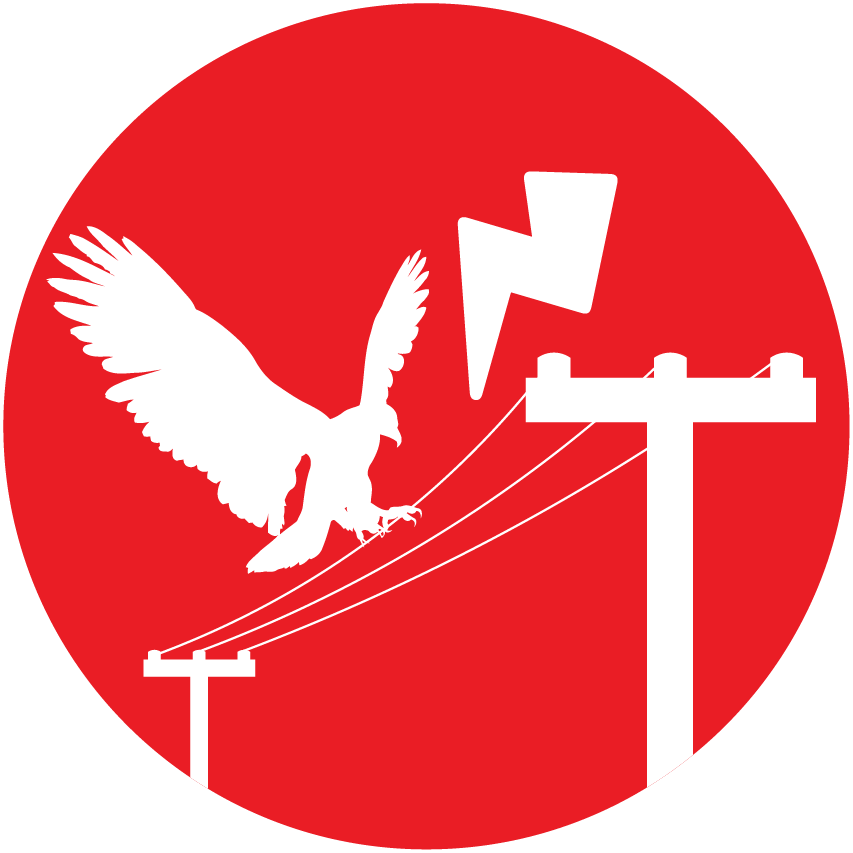
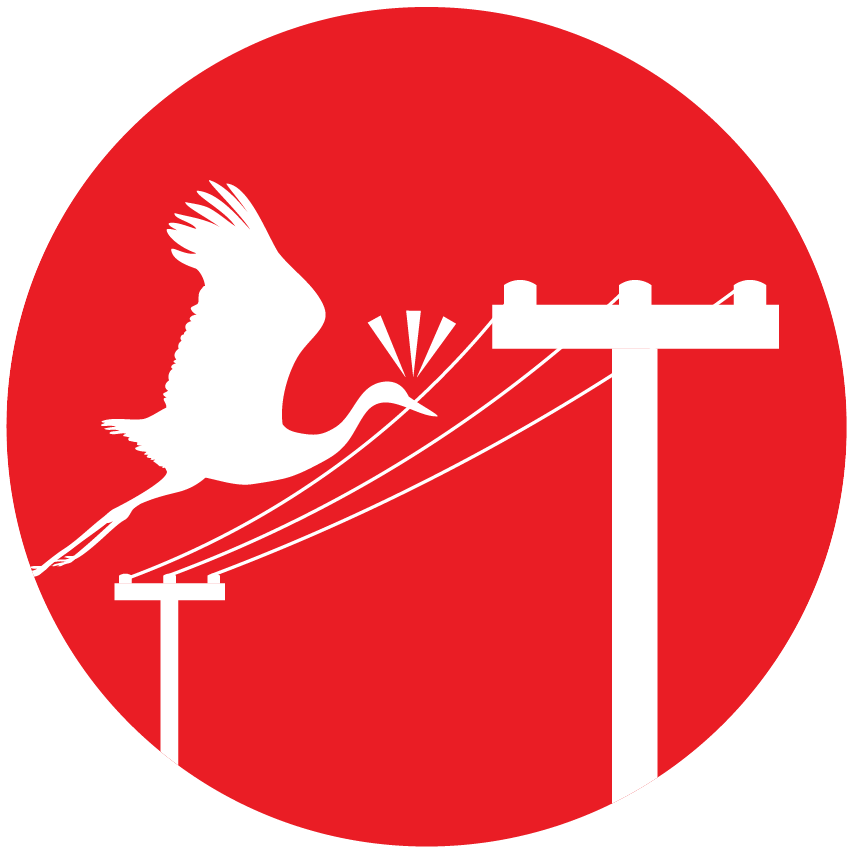
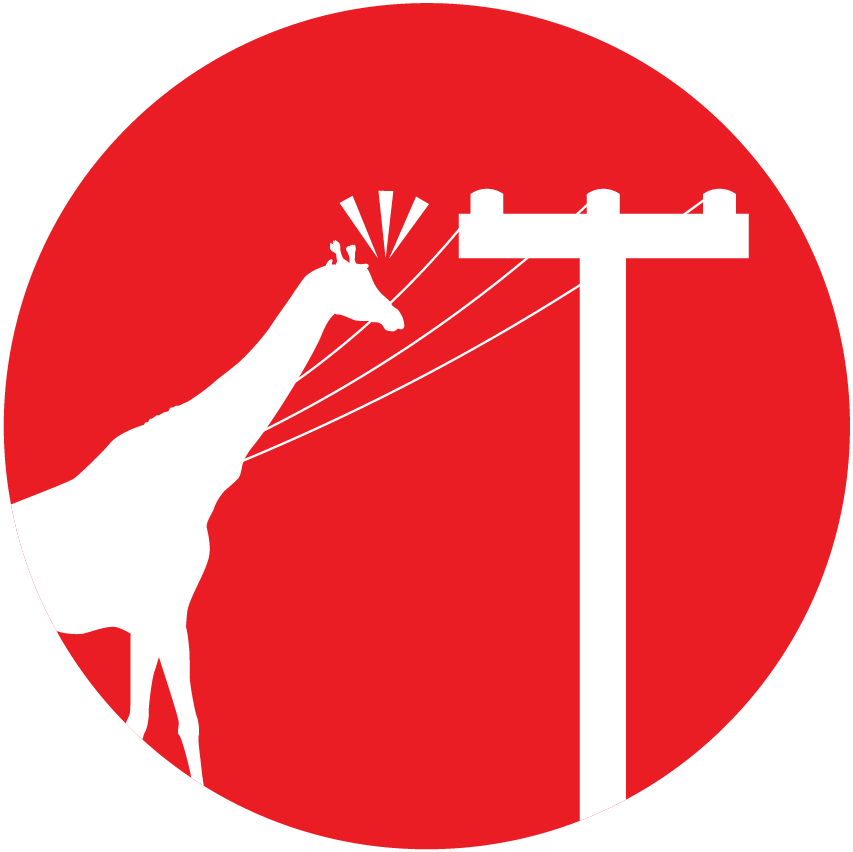

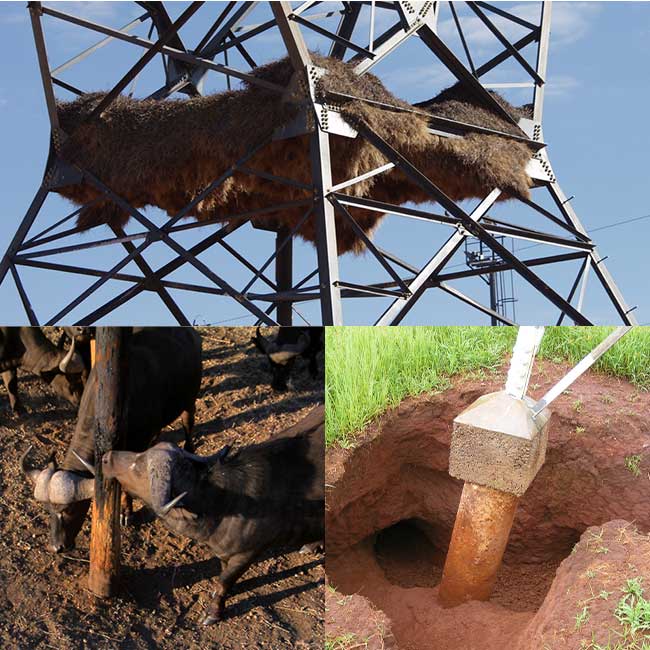
Impact of wildlife on Energy Infrastructure
Besides the detrimental impacts energy infrastructure has on wildlife, when wildlife interacts with electrical infrastructure negatively, there is a knock-on effect, which is costly for utilities and disruptive to end-users. When there is infrastructure damage, utilities can incur significant costs related to hardware replacement, travel to incident sites, human resources for investigations and repairs, and loss in revenue if there are power outages.
Unpacking the true cost of wildlife interactions can be challenging. To do so, a data set of historic interactions and the costs of mitigation must be available, and even then, the estimate can only be as reliable as the quality of the data. The effectiveness of mitigation must also be considered to calculate an accurate cost estimate.
A report prepared for the California Energy Commission in 2005 estimated that the cost of wildlife interactions in California, USA, is between $32 million (~R547,065,920 and $317 million (~R5,419,371,770) per year, with a base case value of $34 million (~R581,269,100). These estimates emphasise the importance of recognising the impact of wildlife interactions with electrical infrastructure on utility performance and profitability.

wildlife interactions with energy infrastructure
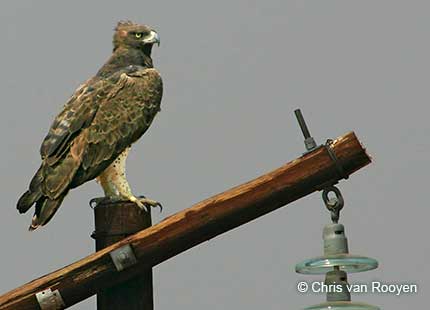
Birds
Bird behavior such as flying, perching, roosting and nesting is the leading cause of supply interruptions and hardware damage to electrical infrastructure in southern Africa. Like birds, other wildlife also exhibits specific physical traits and behaviors, increasing the chances of interacting with electrical infrastructure in a way that compromises utility operations and often results in mortality. Before incidents involving wildlife can be prevented, we need to understand why certain species interact with electrical infrastructure so readily, and what the contributing factors.
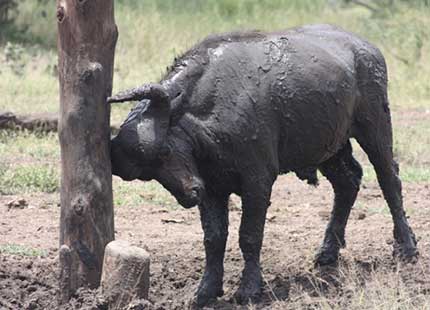
Mammals
Larger mammals such as rhino, elephants, and buffaloes cause damage to infrastructure, particularly wooden poles. The animals use these poles as rubbing posts to scratch and rid themselves of excess parasites, or for territorial marking. Small mammals such as squirrels or mongooses often use substations as nesting sites. They dig large holes in the substation yard, climb up transformers, and often bridge gaps between live phases/live and earth components, which can cause substantial damage to structures within the substation. Porcupines dig under transmission towers in the areas where the soil is less compacted around the foundations and compromise the towers’ stability.
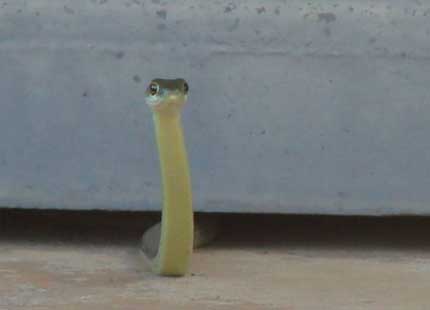
Reptiles
Reptiles are ectothermic (cold-blooded) vertebrates attracted to electrical infrastructure to warm themselves by climbing onto transformers, which emit a fair amount of heat. Reptiles also enter substations in pursuit of prey such as rats, mice, and birds, which nest or reside in substations. This search for food sources increases reptiles’ risk of being electrocuted by energy infrastructure and the risk of hardware (between the phases or where bushings/jumpers are exposed) in the substation becoming damaged.
How we reduce wildlife and energy interactions
The EWT established the Wildlife and Energy Programme in 1996 to address the negative interactions between wildlife and electrical infrastructure. To achieve this, we develop innovative methods to reduce these interactions, work to positively influence utilities’ wildlife management policies, and ultimately phase out problematic processes and hardware. Through adaptive management and the development of pioneering and innovative techniques, South Africa is now recognised as a world leader in managing the burden of wildlife damage on electrical infrastructure while addressing the threats to wildlife.



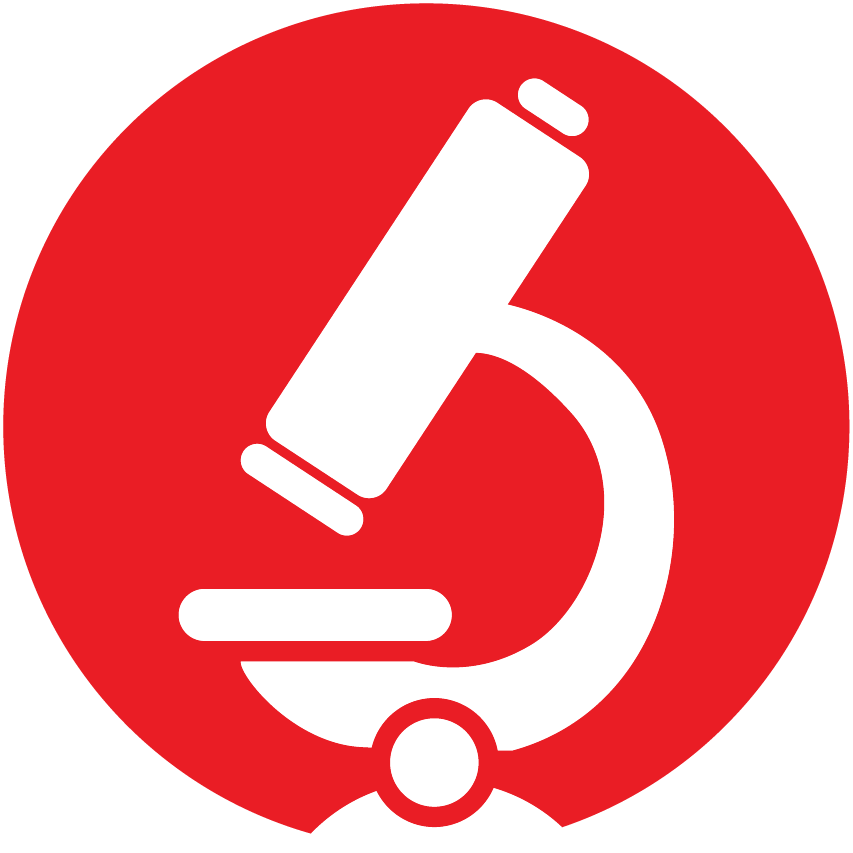

The Eskom/EWT Strategic Partnership
Eskom is responsible for generating electricity supply to meet the increasing electricity demand in South Africa. Unfortunately, interactions between Eskom infrastructure and wildlife often negatively impact ecosystems and certain animal and plant species, creating operational, financial, and reputational risks and challenges for Eskom.
Eskom’s challenge is finding the balance between industry interests, the residential electrification programme, and the effective use and conservation of resources. Given the complexity and scope of interactions between wildlife and Eskom infrastructure, Eskom and the Endangered Wildlife Trust (EWT) formalised their long-standing relationship by entering into a strategic partnership in 1996. The partnership was established to systematically address the potential impacts of energy infrastructure on wildlife nationally and establish an integrated Wildlife Management System (WMS) to reduce these negative interactions.
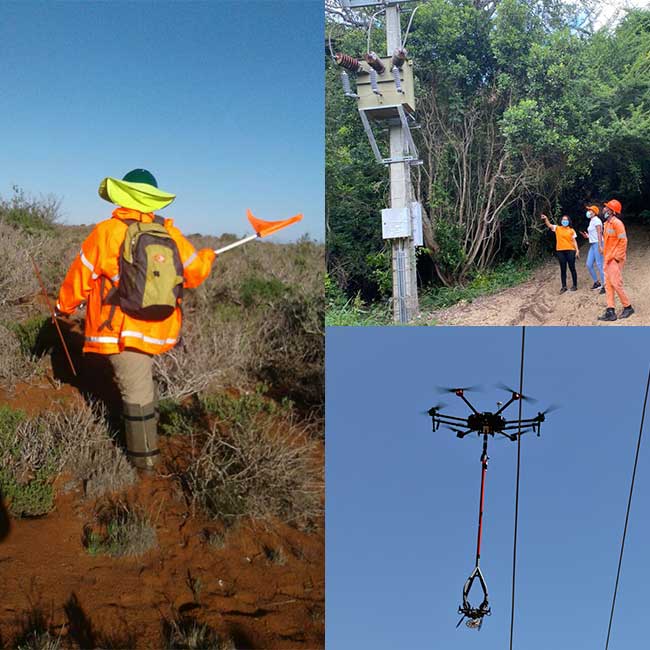
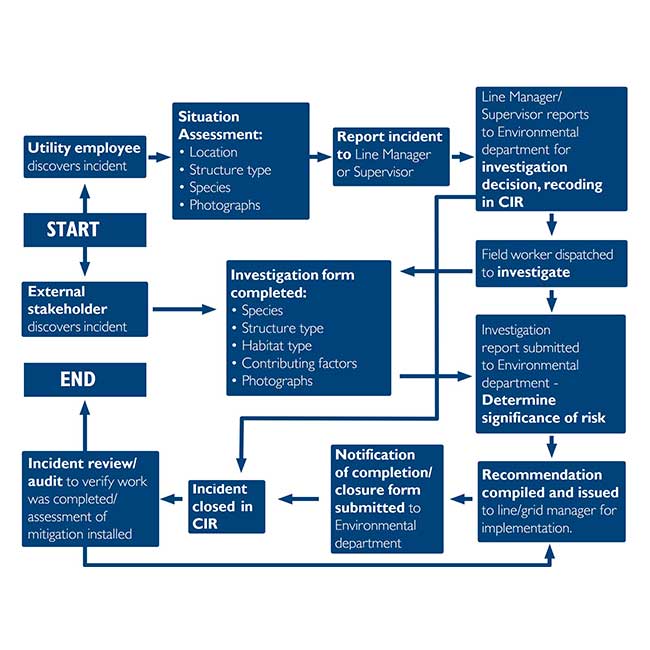

Wildlife Management System
The partnership’s WMS records and monitors incidents of wildlife interactions with electrical infrastructure, from when they happen to when they are closed or mitigated. Once an incident is reported to the EWT, we use a decision tool to decide if a fieldworker visits the incident location to compile a detailed report of all the relevant information.
The wildlife interaction incidents are reported to EWT/Eskom by the public and other conservation NGOs, and the >11,500 Eskom employees trained by the EWT to identify and report incidents of wildlife interactions with electrical infrastructure. The EWT uses this information to develop recommendations for solutions Eskom can implement to prevent repeat interactions and mortalities of endangered species and save Eskom costs. A comprehensive WMS allows utilities to monitor and manage negative wildlife interactions and optimise utility performance.
Research on interactions between wildlife and energy infrastructure
Over the years, the Eskom/EWT Partnership evolved to include numerous other Eskom business units, including Eskom Generation and Research. This enables us to use the WMS to develop innovative methods and devices to mitigate the impacts of wildlife interactions, such as the “OWL” nocturnal Bird Flight Diverter (BFD), and test how effectively they reduce impacts on utilities and wildlife in practice. We also track Red List bird species of concern through incident reports and produce maps showing high-risk areas for wildlife incidents. The EWT also assists Eskom Generation with biodiversity management at all power stations and Eskom renewable energy sites. Some of the research projects have even made it into publications, such as “A large-scale experiment demonstrates that line marking reduces power line collision mortality for large terrestrial birds, but not bustards, in the Karoo, South Africa”, published in 2021 and “Evidence of the effectiveness of conservation interventions from long-term aerial monitoring of three crane species in KwaZulu-Natal, South Africa”, published in 2022.
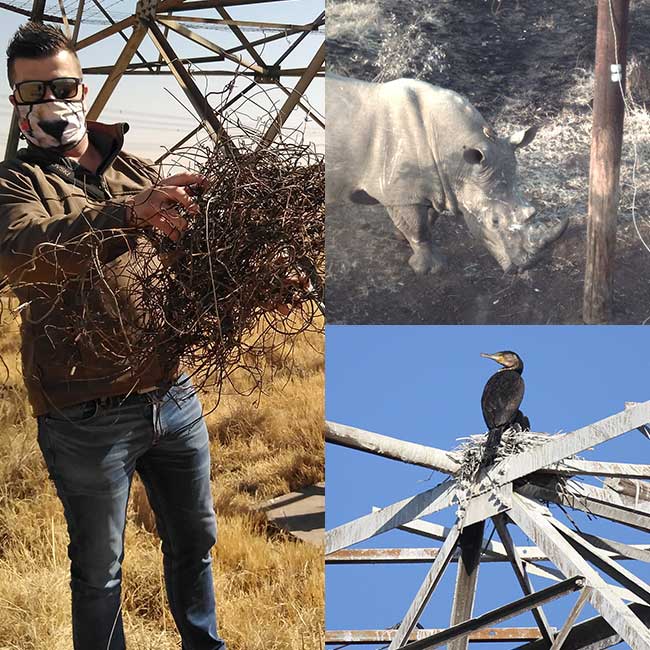
Drone Power Line Marking System
One of the innovations produced through the partnership is the Drone Power Line Marking System, which Eskom is considering as a recognised mitigation installation method for installing bird flight diverters. Installing these diverters makes power line cables more visible to birds in flight. Attaching these devices to the cables was traditionally done with live-line technicians hoisted up to the cables using bucket trucks or lowered down using a helicopter for larger power lines. Working with live power line cables is risky, and the cost and availability of live-line teams and helicopters restrict Eskom’s capacity to mark lines using these methods.
The EWT and Eskom Research, Testing, and Development have developed a remotely-piloted aircraft system (RPAS), more commonly known as a drone, to attach bird flight diverters to Eskom’s overhead conductor and shield wire cables. We designed and tested a mechanism that hoists up to four bird flight diverters and deploys them so that the multirotor RPAS hovers a safe distance from the cable. We calculated that marking power lines using a drone is 92% cheaper than deploying helicopters and 64% cheaper than bucket trucks. Another major benefit is that the human safety risk associated with marking live powerlines is completely removed. The EWT has already assisted wind farm operators in marking privately owned powerlines on their properties, and we are working with Eskom to develop the technical standards required to have this system approved for use throughout the business.

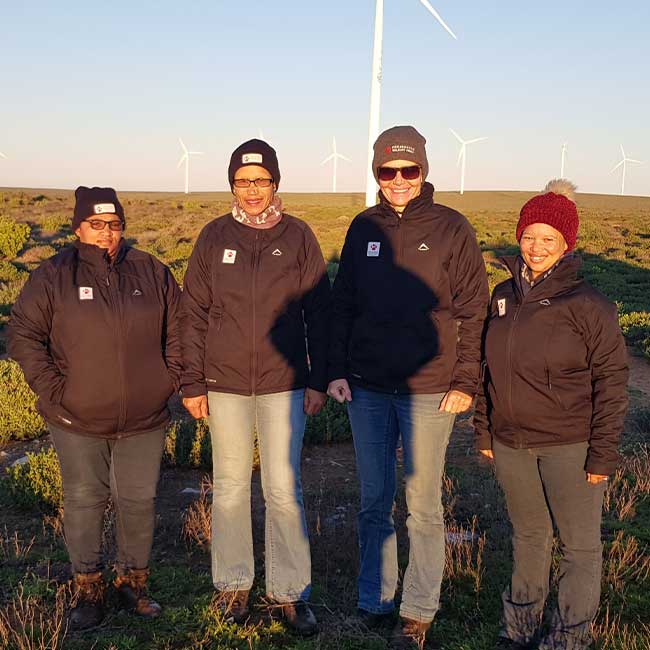
Monitoring impacts of wind energy on wildlife
The EWT has also been monitoring the post-construction biodiversity impact at Eskom’s first operational wind farm in Sere along the West Coast of South Africa since it became operational in March 2015. With four EWT staff members permanently on-site to conduct various surveys, the EWT’s main objective at Sere is to document bird and bat turbine-related fatalities. The team undertakes other surveys in and around Sere, including vegetation monitoring, roadkill surveys, bat monitoring, associated infrastructure surveys, and avifaunal surveys. This ongoing monitoring programme provides Eskom management information on long-term population trends, mortality trends, and seasonal variation in species abundance. These long-term data are important given that most operational wind farms in South Africa only conduct intense operational monitoring in the two years following commission, leaving large gaps in knowledge about the long-term impacts and benefits of wind energy facilities.
Wildlife management partnerships with utilities in other African countries
USAID: Power Africa
In 2020, we partnered with USAID and Power Africa to reduce the cost of wildlife incidents to power utilities in Africa by developing an effective wildlife-friendly management strategy. With the rest of Africa facing similar challenges and much of their biodiversity under threat, immediate action is required to communicate the knowledge accumulated in South Africa and ensure that utilities and in-country conservation partners are well equipped to identify and mitigate wildlife incidents. After more than 30 years of working in the sector, we can seamlessly apply the model we have developed in South Africa to other power utilities operating in landscapes with rich biodiversity.
The EWT Drone Project
Drones or Remotely Piloted Aircraft Systems (RPAS) are a relatively new technology with many potential conservation applications. To operate a drone legally in South Africa, one requires a ROC (RPAS Operating Certificate), which the EWT received from the South African Civil Aviation Authority (SACAA) in 2021. The EWT Drone project was established to bring innovative solutions to environmental monitoring and management challenges. Using RPAS in the conservation sector, we can provide affordable, more efficient, and safer survey and monitoring techniques for numerous applications. We believe that the benefit of drone technology will bolster numerous conservation projects, supporting the cost-efficient collection of data, unlocking new monitoring methods, and driving down the cost of achieving conservation goals.
The conservation-related services the EWT provides using drones
- Surveys for birds, bird nests, and mammals for conservation purposes
- Topographical and vegetation surveys
- Provide aerial support to conservation teams during operations
- Launch drones from vehicles or boats to cater for a variety of survey/monitoring requirements
- Assist authorities in locating injured animals, carcasses, poisoning, and poaching incidents
- Inspect and photograph electrical infrastructure for maintenance and survey purposes
- Attach anti-collision devices to linear electrical infrastructure (using a system developed with the help of Eskom-Research, Development and Testing)
- Operational assistance during electrical infrastructure maintenance
- Aerial photography and videography
- Assisting specialists with surveys relating to Environmental Impact Assessments and related audits
As a registered RPAS operator, the EWT is committed to the legal, safe, and responsible use of drones while promoting the use of this technology in the conservation sector. We have an RPAS management team, including a safety manager, a quality manager, a flight operations manager, and three pilots.
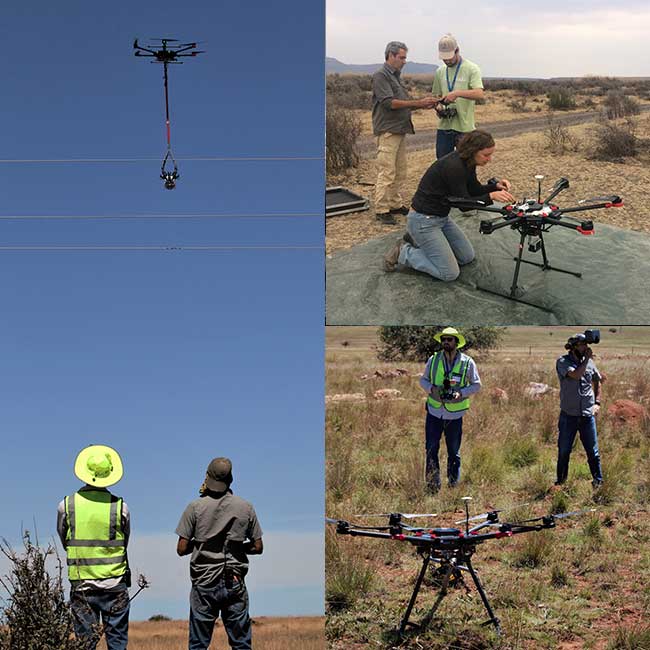
stories of success for
the wildlife and energy
programme
Crossing borders
In 2020/21, we expanded our footprint by engaging with Electricidade de Moçambique (EDM), Mozambique’s national electricity generation and distribution company. The Southern Africa Energy Programme (SAEP), funded by USAID and in partnership with Deloitte, aims to optimise utility performance through effective wildlife management on electrical infrastructure. During our exploratory field visit in April 2021, we uncovered challenges ranging from crows roosting in substations to poorly designed distribution structures and exposed contact points on transformers. Our field trip took us to some of the most remote areas of Mozambique, where the utility is experiencing major supply interruptions caused by climbing mammals, snakes, and certain bird species.
The EWT presented the SAEP readiness assessment project findings to the board of Electricidade de Moçambique (EDM), who approved the project’s next phase, entitled “Capacity building of EDM staff and a Wildlife Management System for the utility”. This work provided an opportunity to introduce the utility to various mitigation options, improved structural designs, and cost-effective solutions for installing bird flight diverters, insulation products, and perch preventers. We also produced and distributed a 116-page colour manual titled “Mainstreaming Wildlife Management into Utilities in Southern Africa”. The manual can be downloaded here. We plan to strengthen our relationship with EDM through several wildlife-related training sessions and further engagements, as and when requested.
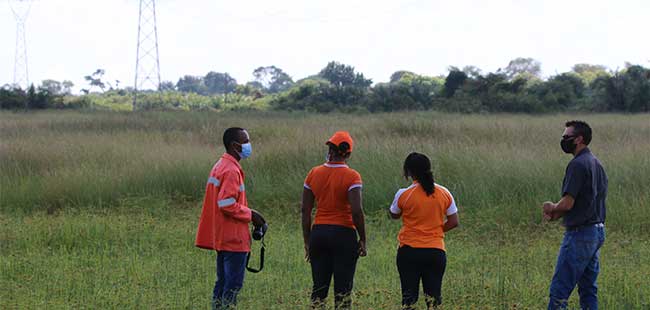
Collision course for Great White Pelicans
In September 2020, Eskom deployed a helicopter and live-line team to the Acacia/Koeberg transmission line near Cape Town, where it had recorded multiple bird collisions. Since 2017, more than 80 Great White Pelicans have collided with this line, with many dying on impact and others later from their injuries. With only an estimated 250 breeding pairs of these pelicans on nearby Dassen Island, this is a significant number of deaths. We fitted 90 experimental bird flight diverters sourced from Australia to the problematic sections of the line. The novel bird flight diverter, called a ROTAMARKA, is relatively large and rotates even in a slight breeze, making it extremely visible to birds in flight. We closely monitored this line section for three months before and four months after the diverters were installed. Encouragingly, provisional results demonstrated a 55% reduction in pelican collision mortality rates.
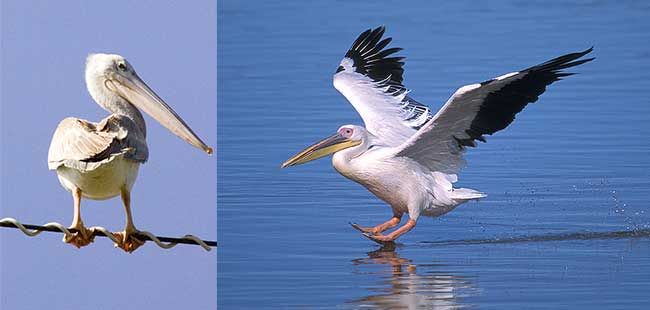
Conservation takes flight
In addition to marking live power lines with bird flight diverters, the EWT Drone project has assisted Conservation South Africa (CSA) in mapping a 2,000 ha area to monitor the success of a project implemented to remove alien invasive plants. The images captured during the seven-day mission were stitched together using specialised software, enabling the client to compare the alien clearing effort before and after the work.
Using a drone, the EWT assisted Mulilo, a wind energy developer, in identifying nests belonging to cliff-nesting bird species. Through a series of short survey flights over five days, we took video footage of hard-to-reach cliff faces, clearly pin-pointing the location of nests. This information will guide the wind infrastructure development strategy for the area.
Using a thermal sensor and our DJI Matrice 600 drone, the EWT assisted Eskom Generation at Kriel Power station with a game count, the first time that a drone has been deployed on a power station in South Africa for this purpose. The animals were not visible from any internal road and were presumed to be sheltering amongst dense vegetation on the power station footprint. We confirmed this using the thermal sensor, which easily detects warm objects between the trees and shrubs.
We assisted the University of Pretoria Mammal Research Institute (MRI) with drone support for aerial photography of Southern Right Whales during the annual whale census in Hermanus. These aerial images assist the MRI with the identification of individual whales as well as contributing to the body condition study currently in progress at the university.
“Drone technology has revolutionised the way we conduct our research. Using drones, we can gather overhead images of right whales every year, allowing us to track the variation in their body condition over time in a very cost-effective manner and collect additional photo-identification data, which allows us to assess the residency time of individual animals on the South African breeding ground. Also, an aerial view of these animals reveals more information about their behaviour than viewing them from a boat. It is truly a unique piece of technology that can be adjusted for various research projects, and we aim to apply it in much more of our research going forward.”
Dr Els Vemeulen, Research Manager of the MRI Whale Unit
On 10 March 2022, we completed our first contract for a private power line client at the Copperton Wind Farm, where we attached bird flight diverters to nearly 7 km of power line over five days. This was the first time a 132 kV line was marked using a drone in South Africa.
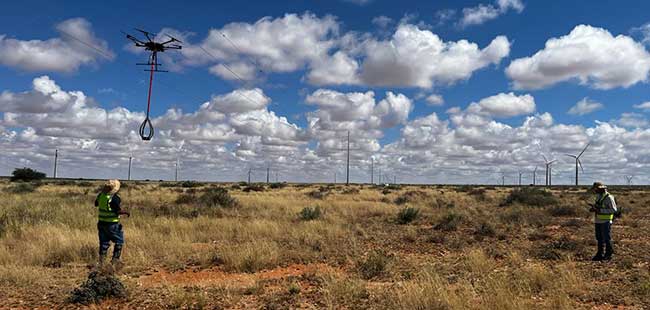
how you can help reduce the impact of energy infrastructure on wildlife
Report any wildlife incidents on electrical infrastructure, email us
